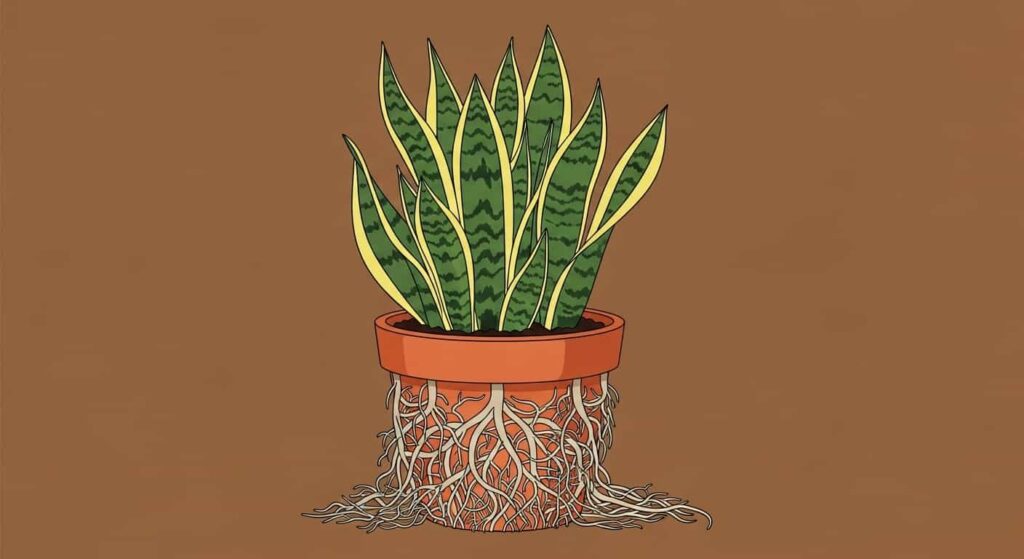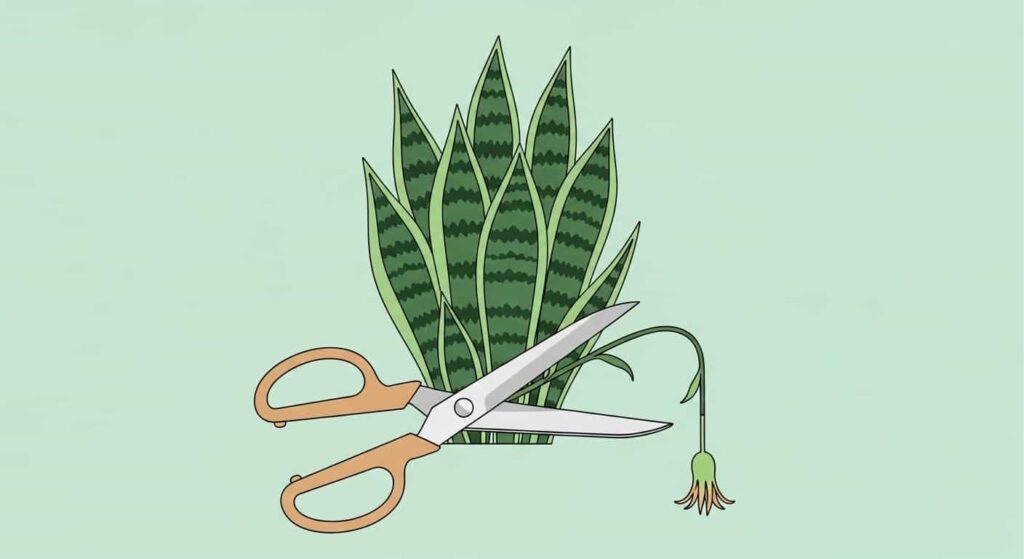The snake plant is a titan of the houseplant world, celebrated for its near-indestructible nature and sleek, modern look. It’s a plant that thrives on a bit of neglect, purifying the air while demanding very little in return. But hidden within this stoic plant is a surprising secret: it can produce beautiful, fragrant flowers. Seeing a snake plant flower bloom is a rare event, one that many long-time owners never get to witness, making it a true badge of honor for any plant enthusiast.
If you’ve ever wondered if it’s possible to coax your own snake plant into flowering, the answer is a hopeful yes. While there’s no magic button to press, you can strategically create an environment that significantly increases your chances. This isn’t about forcing the plant; it’s about understanding its natural cycles and providing the right cues to trigger its reproductive instincts.
This guide will walk you through the precise steps and conditions needed to encourage your snake plant to bloom. We’ll cover everything from the ideal “happy stress” conditions to common mistakes that might be holding your plant back. Get ready to learn the secrets to unlocking one of the most rewarding sights in the world of indoor gardening.
Understanding the “Why” Behind the Bloom

Before diving into the “how,” it’s crucial to understand why a snake plant flowers in the first place. Unlike many plants that bloom as a sign of perfect, lush conditions, a snake plant often blooms when it’s under a specific type of mild stress. In its native arid environments in Africa, these stressors would signal that conditions might be changing, prompting the plant to reproduce to ensure its survival.
This process is a delicate balance. The plant needs to be healthy and mature enough to have the energy reserves for flowering, but also feel just enough pressure to switch from vegetative growth (making leaves) to reproductive growth (making flowers). Your goal is to replicate this “happy stress” in your home. The key triggers are light, water, and root space.
Creating the Perfect Environment for Blooming
Encouraging a snake plant flowering event is about creating a perfect storm of conditions. Here’s a breakdown of the essential elements you need to control.
1. Let It Get Comfortably Crowded (Root-Bound)

This is arguably the most important factor. Snake plants that have ample room to expand their root systems will focus their energy on growing bigger and producing new pups (baby plants). A plant that is snug in its pot, with its roots filling the available space, receives a signal that it has limited room to expand. This gentle pressure can trigger its instinct to flower.
How to do it:
- Resist Repotting: Avoid the urge to repot your snake plant every year. A mature snake plant can happily live in the same pot for 2-5 years, or even longer.
- Know When It’s Time: The right time to repot is when the plant is literally breaking its pot, the roots are pushing the plant up and out of the soil, or water runs straight through without being absorbed. Until then, let it be. A snug fit is a good thing for encouraging blooms.
2. Maximize the Light Exposure

While snake plants are famous for tolerating low light, they will never bloom in a dark corner. To gather enough energy for the demanding process of producing a snake plant flower stalk, the plant needs consistent, bright light.
How to do it:
- Find the Sweet Spot: Place your snake plant in a location where it will receive several hours of bright, indirect sunlight each day. An east-facing window that gets gentle morning sun is perfect. A spot a few feet back from a south- or west-facing window also works well.
- Avoid Direct Sun: Be careful to avoid intense, direct afternoon sun, which can scorch the leaves and cause stress that is harmful, not helpful.
- Signs of Good Light: A healthy snake plant in good light will have vibrant, firm leaves. If the leaves are dark green and floppy, it likely needs more light.
3. Implement a Strategic Watering Routine

Proper watering is key. Snake plants are succulents and are highly sensitive to overwatering. Mimicking a natural dry season is an effective way to encourage a snake plant to bud.
How to do it:
- Deep and Infrequent Watering: When you do water, do so thoroughly until water drains from the bottom of the pot. Then, and this is the critical part, allow the soil to dry out completely before you water again. This could mean watering every 2-6 weeks, depending on the season, light, and humidity in your home.
- Induce a Winter Rest: During the winter months, reduce watering even more. Watering just once a month or even less can simulate a dormant period. This “drought” can be the final cue the plant needs to trigger blooming when spring arrives and watering becomes slightly more frequent.
Common Mistakes to Avoid

When trying to make your snake plant bloom, what you don’t do is just as important as what you do. Avoid these common errors:
- Over-Fertilizing: Snake plants are not heavy feeders. Giving them too much fertilizer, especially nitrogen-rich formulas, will encourage lush leaf growth at the expense of flowers. If you fertilize, do so only once or twice in the spring with a diluted, balanced fertilizer.
- Frequent Repotting: As mentioned, giving your plant a bigger pot too soon is the quickest way to prevent it from flowering. Let it get cozy and established.
- Inconsistent Care: Moving the plant around frequently, or swinging between overwatering and severe neglect, creates harmful stress. The goal is consistent care that mimics a stable, natural cycle.
- Impatience: A snake plant must be mature to bloom, which can take many years (often 5+). If you have a young plant, focus on providing excellent care and allow it to mature naturally.
Caring for Your Snake Plant After It Blooms

Congratulations, you did it! Your snake plant has produced a flower stalk. The blooms themselves can last for several weeks, opening sequentially up the stalk and filling your room with a wonderful fragrance at night. Here’s what to do once the show is over.
- Enjoy the Moment: First, take plenty of pictures and enjoy the rare sight and smell.
- Prune the Stalk: Once all the flowers have withered and the stalk begins to dry, you can prune it. Use a clean, sharp knife or pruning shears to cut the stalk as close to the plant’s base as possible. Removing the spent stalk allows the plant to redirect its energy back to its leaves and roots.
- Resume Normal Care: After pruning, simply continue with your regular care routine. The plant may enter a period of rest and not produce much new growth for a while, which is perfectly normal.
The Ultimate Reward for a Patient Gardener

Encouraging a snake plant to bloom is a journey of patience and observation. It’s about tuning into the subtle needs of a plant that usually asks for so little and providing the precise cues it needs to do something extraordinary. While the goal is to see that rare and beautiful flower stalk, the process itself will make you a better, more attentive plant parent.
When that first hint of a flower stalk appears, it’s a truly magical moment—a special reward for your dedication and a stunning display from one of nature’s most resilient creations.
Frequently Asked Questions About Snake Plant Blooming
How long does it take to get a snake plant to bloom?
There’s no fixed timeline. A plant must first reach maturity, which can take five years or more. From there, if the conditions are right, it might bloom the following season. It requires a great deal of patience.
Does blooming harm or kill the snake plant?
No, blooming does not kill the snake plant. This is a common misconception, often confused with “terminal blooms” in other plants like some agave species. For a snake plant, flowering is a natural, albeit energy-intensive, part of its life cycle. The plant will continue to live and grow long after the flowers have faded.
Can I encourage a newly purchased snake plant to bloom?
It’s unlikely unless you purchased a large, very mature specimen that is already root-bound. Most snake plants sold in nurseries are relatively young. Your best bet is to give it a few years of consistent care to allow it to mature.
Will my snake plant bloom every year?
Not necessarily. Some snake plants might bloom for a few years in a row if conditions remain ideal, while others may only bloom once in their lifetime. It’s a wonderfully unpredictable event.

